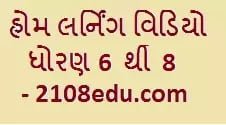Indian schooling runs with over 3 lakh teachers and numerous students of regional, cultural, social and linguistic diversity. Therefore, it is clear that we can properly implement the covid-19 digital education of today, considering the basic reality of every state and union territory of India, decentralized schemes, their implementation and evolution of daily education.
You can see in this slide that there are three main areas of providing digital education. 1. Online field. 2. Partial online field. 3. Offline field. These three main areas include several model or secondary areas.
In the first model, the teacher messenger, e-mail conveys the study material to the students through other means and the students study the material and discuss the embarrassing questions with the teacher through video conference. In the second model, online classes are conducted with the help of a video conferencing tool through which students can watch videos at any time and study at their convenience.
Classes are organized by live broadcast in the third model. In which students join live classroom and can join any group under Learning Management System. Such as Microsoft Teams, Google Meet, Zoom etc. Through this LMS (Learning Management System) students can be given homework and it can also be checked and online test can also be organized.

I just like the helpful info you provide in your articles.
I’ll bookmark your blog and check once more here frequently.
I am reasonably sure I will be told lots of new stuff right here!
Good luck for the next!